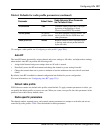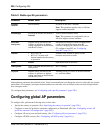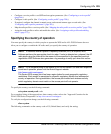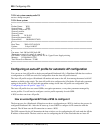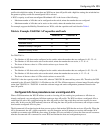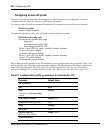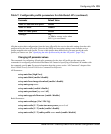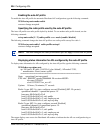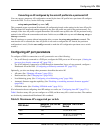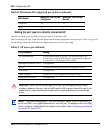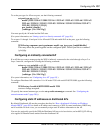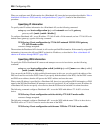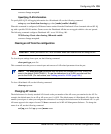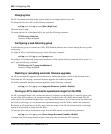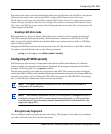
Configuring APs 235
Nortel WLAN—Security Switch 2300 Series Configuration Guide
Converting an AP configured by the auto-AP profile into a permanent AP
You can convert a temporary AP configuration created by the Auto-AP profile into a persistent AP configura-
tion on the WSS. To do so, use the following command:
set ap auto persistent {ap-num | all}
This command creates a persistent Distributed AP configuration based on the settings in the Auto-AP profile.
The Distributed AP name and number assigned by the Auto-AP profile are used for the persistent entry. For
example, if the Auto-AP profile assigned the number 100 and the name ap100 to the AP, the persistent config-
uration for the AP has the same number and name. In this case, use 100 as the ap-num with show ap, set ap, or
clear ap commands.
The AP continues to operate without interruption after you enter the set ap auto persistent command. The
next time the AP is restarted, the Auto-AP profile is not used to configure the AP. Instead, the persistent
configuration is used. (Use the save config command to make the AP configuration persistent across switch
restarts.)
Configuring AP port parameters
To configure a WSS for connection to an AP, you must do one of the following:
• For an AP directly connected to a WSS port, configure the WSS port as an AP access port. (“Setting the
port type for a directly connected AP” (page 236).)
• For an AP indirectly connected to a WSS through an intermediate Layer or Layer network, configure a
Distributed AP on the WSS. (“Configuring an indirectly connected AP” (page 237).)
Optionally, you also can change other parameters that affect the entire AP:
• AP name. (See “Changing AP names” (page 239).)
• Dual-home bias. (See “Changing bias” (page 240).)
• Load-balancing group. (See “Configuring a load-balancing group” (page 240).)
• Automatic firmware upgrade capability. (See “Disabling or reenabling automatic firmware upgrades”
(page 240).)
• LED blink mode. (See “Enabling LED blink mode” (page 241).)
(For information about configuring Auto-RF settings on a radio, see “Configuring Auto-RF” (page 321).)
Table 8 lists how many APs you can configure on a WSS, and how many APs a switch can boot. The numbers
are for directly connected and Distributed APs combined.
Table 8: Maximum APs supported per switch
WSS Model
Maximum That Can Be
Configured
Maximum That Can Be
Booted
2382 320 32, 64, 96 or 128*
2380 300 40, 80, or 120, depending
on the license level



